Nickel ore laterites and sulfi des
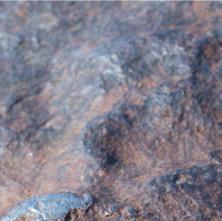

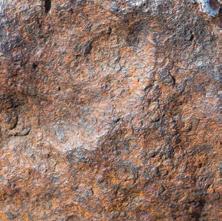
NICKEL MAGAZINE
THE MAGAZINE DEVOTED TO NICKEL AND ITS APPLICATIONS
NICKEL, VOL. 39, Nº 1, 2024
Ubiquitous nickel
Maritime transport LNG retrofit
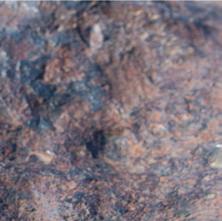


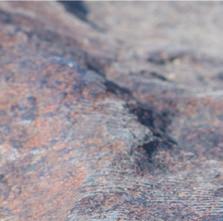
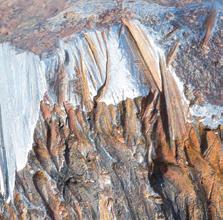

Q & A with Heather Allain, Materials Technology Institute

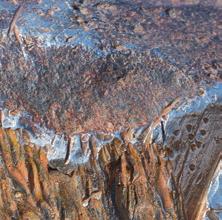



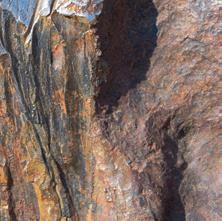


CASE STUDY 30
GORDIE HOWE INTERNATIONAL BRIDGE

Design, construction, maintenance, and operation of this CAD $6.4 billion project was led by a consortium including ACS Infrastructure, Fluor, Aecon, and Dragados Canada. When completed it will have six traffic lanes, as well as bike and pedestrian pathways enhanced by beautiful artwork.
Total length: 2.5 km
Width: 37.5 m
Height: 220 m
Longest span: 853 m
Named after one of the most resilient and iconic hockey players of all time, the Gordie Howe International Bridge is poised for greatness, providing a visually stunning transportation route across the Detroit River, connecting Canada and the United States.
The 2.5 km six-lane crossing will be the longest cable-stayed bridge in North America, with a main span of over 850 m linking Detroit, Michigan with Windsor, Ontario. It will serve the busiest international border crossing in North America in terms of trade volume.
In the early 2000s, there was a growing concern by both countries that the existing Ambassador Bridge, owned privately and built in 1929, was in need of significant repair and the four-lane structure could not meet future traffic volume.
The Windsor-Detroit Bridge Authority (WDBA) formed a public-private partnership (PPP) with Bridging North America, a consortium of the companies with the expertise needed to spearhead this massive infrastructure undertaking.
Construction began July, 2018 with a design life of 125 years. A comprehensive evaluation plan was required to ensure selection of appropriate materials. The PPP engineers chose the superior corrosion-resistant properties of ASTM 955 Type 2304 (UNS S32304) or Type 2205 (S32205) stainless steel to assure long-term durability of the critical reinforced concrete structural elements exposed directly to de-icing salts and splash zones.
With trade between the two countries booming again after slowdowns during the COVID pandemic, there is great anticipation about the completion and opening in Fall of 2025.
A big score for Canada and the US.
2 | NICKEL, VOL. 39, Nº 1, 2024 2 | NICKEL, VOL. 39, Nº 1, 2024
© 2022 GORDIE HOWE INTERNATIONAL BRIDGE
EDITORIAL: UBIQUITOUS NICKEL
Nickel is valued for its unique properties in countless applications, spanning diverse end-use sectors. The lion’s share of nickel is used to make stainless steel which is destined for a wide variety of end uses. It contributes to the functionality and sustainability of all sorts of applications from consumer goods to large scale construction projects. Meanwhile, the fastest growing use of nickel is in batteries – up 30% in 2022.1

Nickel end use 2022

In this edition of Nickel we offer a smorgasbord of nickel applications, delving into some of the myriad roles this versatile metal plays across industries, from enabling technology to delivering resilience.
Discover a groundbreaking medical device, a revolutionary battery recycling technique as well as fish-friendly stainless steel applications, spectacular street art and methods to boost bridge durability. Nickel plays a role in all of them.
A new series of articles about nickel production also launches in this edition. We will discuss sustainability, treatment processes and innovative developments, starting at the beginning on page 6, with nickel ores.
This edition of Nickel explores the multifaceted world of nickel and celebrates its indispensable role in shaping the world we live in today.
Clare Richardson
Editor, Nickel

On the cover
Located in Namibia, the Hoba meteorite measuring 2.7 × 2.7 × 0.9 m (8.6 × 8.6 × 3 ft) is estimated to weigh more than 60 tonnes. It is classified as an iron meteorite composed of about 84% iron and 16% nickel.
NICKEL, VOL. 39, Nº 1, 2024 | 3
1 Benchmark Mineral Intelligence SOURCE: SMR GMBH WIKIMEDIA COMMONS
Nickel containing stainless steels 66% Mobility and transit 25% Energy 12% Consumer goods, catering, food processing 28% Architecture, building construction 12% Process industries 14% Others 4% Other industrial components 4% Batteries 17% Plating 5% | Alloy steel 3%— Nickel-base— alloys 6% Nickel first use
2022
Others 3% |





Valve evolution
Professor Dong Nianguo and his team at Peking Union Medical College Hospital have successfully pioneered a ʻlivingʼ valve, enabling endothelialisation, making it stronger and last longer than current valves made entirely of porcine animal tissue. The porcine valve calcified over time, causing the ʻdoorʼ of the heart to stay open and the blood to flow backwards. To correct this, the scientists made a skeleton with Nitinol (UNS N0155), which has shape memory properties, creating a ʻnetʼ with the porcine heart valve close to the human valve, enabling the bodyʼs cells to slowly attach and grow into the valve.
This ʻliving valveʼ eventually allows all of the porcine cells to be removed, eliminating the calcification and potential rejection of the porcine valve. The result? A ʻheart doorʼ that opens and closes more powerfully with tissue structure very similar to the human heart valve. “We never gave up and finally ushered in the dawn of hope,” said Qiao Weihua, a research team member.
4 | NICKEL, VOL. 39, Nº 1, 2024 NICKEL CONTENTS Nickel magazine is published by Nickel Institute www.nickelinstitute.org Dr. Hudson Bates, President Clare Richardson, Editor communications@nickelinstitute.org Contributors: Gary Coates, Rick Husa, Richard Matheson, Geir Moe, Kim Oakes, Lissel Pilcher, Lyle Trytten, Benoît Van Hecke, Odette Ziezold Design: Constructive Communications Material has been prepared for the general information of the reader and should not be used or relied upon for speci c applications without rst securing competent advice. While the material is believed to be technically correct, Nickel Institute, its members, sta and consultants do not represent or warrant its suitability for any general or speci c use and assume no liability or responsibility of any kind in connection with the information herein. ISSN 0829-8351 Printed in Canada on recycled paper by Hayes Print Group Stock image credits: Cover: iStock©fabio lamanna pg 4 iStock©selimaksan, pg 6 iStock©Nanang Sugianto, Pg 8 iStock©DaveAlan, Pg 13 iStock©pricelessphoto, Pg 15 VectorStock FancyTapis, Sergio34 02 Case study no. 30 Gordie Howe International Bridge 03 Editorial Ubiquitous nickel 04 Nickel notables 06 Processing nickel Laterites and sulfi des 08 Water extraction facility that is fish-friendly 10 Materials Technology Institute Interview with Heather Allain 12 Maritime clean-up LNG retrofi t 13 Nickel alloys Heat resistant alloys 14 Technical Q&A 15 Why nickel? 15 UNS details 16 Squashed bean Anish Kapoor NOTABLES

Winning solution
Awarded an Earthshot Prize in late 2023, Hong Kong-based GRST (Green, Renewable, Sustainable Technology) has come up with a prize-winning process to make EV batteries cleaner using easily recycled components. Founded by William, Prince of Wales, in 2020, this annual event recognises innovative solutions to the worldʼs most pressing environmental challenges – air and water pollution, environmental degradation, waste and climate change. GRST created a way to build the battery using a water-soluble binding composite instead of using volatile solvents and hard-to-recycle materials. The result is at the end of the batteryʼs life, the lithium, cobalt and nickel can be more economically recovered and reused again in another battery, reducing demand for further extraction. Itʼs another valuable win-win for EVs and the environment.
Knowing Nickel
Knowing Nickel is the latest video from the Nickel Institute. This short animation aims to give a high level insight into two of the important science concepts, bio-availability and bio-elution, that underpin the safe use of nickel. While the underlying science is serious, the short film aims to entertain and inform about nickel. If it piques your interest, there is of course more in-depth information on the Nickel Institute website. www.nickelinstitute.org



Strong armouring
Itʼs a first that, when applied, will bolster the strength of stainless steel and other metal alloys, increasing their capabilities. Researchers at Oak Ridge National Laboratory (ORNL) in Tennessee, USA, have demonstrated how a coating of hexagonal boron nitride (hBN) resulted in improved protection against harsh corrosion over a long time as well as mitigate high-temperature oxidation in air. Using a process called atmospheric pressure chemical vapour deposition, the hBN coatings are produced from a combination of solid boron sources and molecular nitrogen. This added protective layer of hBN coating for Ni and Fe-containing alloys opens up possibilities for large-scale industrial applications to enhance the proficiency of things like solar panels, semiconductors, and aerospace turbine blades. ORNLʼs Ivan Vlassiouk, who led the study notes another plus, “Using this process to synthesise single- and few-layer hBN could improve the performance of emerging twodimensional electronic and photonic devices.” The work was published in Advanced Materials Interfaces.

GRST ADAM MALIN/ORNL/U.S. DEPT. OF ENERGY NICKEL, VOL. 39, Nº 1, 2024 | 5
NICKEL INDUSTRY PART 1
PROCESSING NICKEL LATERITES AND SULFIDES
This is the first in a new series of articles on the nickel industry, written from an inside perspective to offer a deeper view of what we do, how we do it, and some of the challenges in the production of this important and versatile element. We will be discussing ores, treatment processes, sustainability as well as ongoing developments. We start with ores.

Nickel is primarily used in two areas today: stainless steel and other alloys, and chemical uses including batteries. Stainless steel is the largest part of the nickel market, while batteries are the fastest growing.
To meet the global nickel demand, nickel is produced from two main sources: fresh ores and recycled materials. Recycling (whether stainless steel and nickel alloys or batteries) is an important part of the nickel value chain. The very high recylability of nickel is a critical part of its sustainability profile, but most of the nickel market is focused on the fresh material put into the supply chain, now about 3 million tonnes/year.
Two broad ore types
Nickel occurs in two broad ore types: laterite (oxide) ores, principally located in tropical and sub-tropical areas, and sulfide ores, principally located in the temperate to sub-Arctic regions. Major nickel mining locations are depicted in the map – but some of these locations have many operations, and some only one. More than 50 % of nickel produced today is mined in Indonesia. Ore is often processed near the mine site, but there is substantial regional and global trade in nickel laterite ores, and some trade in nickel sulfide concentrates.
Laterite ores
Laterite ores occur as surface deposits and are traditionally separated into two main types: limonites (lower nickel, high iron) and saprolites (higher nickel, low iron). Limonites typically have cobalt as an additional value component, while saprolite is treated for its nickel value only.
Today, limonite ores are mostly treated by leaching, where the ore is reacted with sulfuric acid and the dissolved nickel and cobalt are recovered as nickel-cobalt intermediate products. These intermediates can be refined to nickel metal or directly into the battery supply chain. This processing based on dissolution in water is called hydrometallurgy.
Saprolite ores are treated by smelting, where the ore is dried and melted using energy from coal and electricity – often coalbased – to recover the nickel as an iron-nickel alloy. The iron-nickel alloy is generally used directly to make stainless steel. With growing battery demand, we have seen a
6 | NICKEL, VOL. 39, Nº 1, 2024
resurgence of a past practice to convert the alloy into a highergrade material (nickel matte) for refining. The processing based on melting materials at high temperatures is called pyrometallurgy.
Sulfi de ores
Sulfide ores can be at (or near) the surface or deep underground, and often have additional value streams beyond cobalt such as copper, platinum, and palladium. Together, these can be worth more than the nickel. These ores are treated differently to laterites. They can almost always be upgraded at the mine site to a shippable nickel concentrate. The concentrate can
then be treated at centralised facilities. Most of these are nickel smelters, where the concentrate is melted using the energy from the contained sulfur and electricity to create nickel matte which is subjected to further refining, but there are also direct hydrometallurgical approaches in use.
Future articles will unpack these technologies a little bit further, identifying some of the historical and ongoing improvements, some of the sustainability challenges faced by the industry, and some of the potential alternative routes which might come to fruition alongside the current commercial approaches.
NICKEL, VOL. 39, Nº 1, 2024 | 7
Nickel occurs in two broad ore types – laterite and sulfi de
mining
mining
site processing Smelting and refi ning General industry fl owchart for fresh nickel materials Smelting Conversion
metal Chemical use (battery) Stainless steel and alloys use Iron-nickel alloy Leaching Intermediates
Sulfi de
Laterite
Mine
Nickel
Laterite operations Sulfi de operations
A FISH-FRIENDLY WATER EXTRACTION FACILITY

The Rangitata Diversion Race (RDR), completed in 2022, plays a crucial role in extracting water from the Rangitata River in New Zealand’s South Island, serving irrigation, stock water, and hydropower generation needs year-round. However, the environmental impact on native fish populations was a concern that instigated the development of an innovative new screening solution.
AWMA Water Control Solutions designed and constructed one of the world’s largest fish-friendly water extraction systems, using nickel-containing stainless steel.
To address this challenge, an environmentally sustainable diversion system was designed and fabricated from nickel-containing Types 304 (UNS S30400) and 316 (S31600) stainless steels. This screening solution delivers the required flows while ensuring the safe passage of sporting fish, such as salmon and trout, as well as various endangered native fish species back into the river system.
Comprehensive research led to the selection of a physical, self-cleaning, wedge wire screening system, proven through decades of successful performance. This effective
solution featured a stainless steel screening structure that was not only self-cleaning and fish-friendly but also delivered reliable water flows with a low whole-of-life cost.
The project required seven T-Screens (a total of 14 cylinder screens), a Flat Panel Screen, and a LayFlat Gate, all fabricated using stainless steel.
Three main design characteristics prioritised for the fish protection screens were aperture size, approach velocity, and self-cleaning functionality. The aperture size of the screens was tailored to meet the specific aquatic life present,
8 | NICKEL, VOL. 39, Nº 1, 2024

considering fish species and breeding patterns. Low approach velocities prevent entrainment and impingement of debris and fish through low, even flow distribution across the entire screen area.
The screens, fabricated from stainless steel wedge wire, include a self-cleaning capability that incorporates internal and external brush cleaning mechanisms to efficiently remove debris, and algae while maintaining fish protection and optimal flow.
The 14 cylinder screens were fabricated from Type 304 stainless steel wedge wire screen mediums, measuring 2.1 m in diameter and 3.0 m in length.
The seven, 8.75 m high retrieval systems were each fitted with headstocks consisting of Type 304 stainless steel headstock covers to protect the Type 316 stainless steel drive shaft s that were 100 mm in diameter. 140 m of Type 316 stainless steel wire rope cables, complete with stainless turnbuckles and fittings were required for the purposes of lowering and raising
the intake screens. The 8-tonne stainless steel flat panel screen measured 30 m x 3.5 m (105 m2).
Approximately 1.8 tonnes of stainless steel was used to fabricate the LayFlat Water Control Gate utilised at the end of the bypass channel as a fish-friendly, overshot gate for water regulation and control. Prior to installation, a pickling surface treatment was performed on all stainless steel components.
In total, over 55 tonnes of stainless steel were used for the manufacture of the screening system. Stainless steel has ensured the durability, performance, and longevity of the water extraction facility with a 50+ year asset life expectancy in fresh water. The combination of high-quality stainless steel materials and innovative infrastructure design has resulted in an environmental solution that delivers high-quality water output, reduced energy consumption, and reliable flow delivery while ensuring native fish protection.
Abridged from an article featured in Australian Stainless Magazine Issue 78





The project required seven T-Screens (a total of 14 cylinder screens), a Flat Panel Screen, and a LayFlat Gate, all fabricated using nickel-containing stainless steel.
NICKEL, VOL. 39, Nº 1, 2024 | 9 AWMA WATER CONTROL SOLUTIONS. AWMA WATER CONTROL SOLUTIONS.
Actuator Gate Fixed external brush Rotating wedge wire screens Screened water Internal rotary brush
INTERVIEW WITH HEATHER ALLAIN, EXECUTIVE DIRECTOR, MATERIALS TECHNOLOGY INSTITUTE





Heather Allain has been with MTI since 2008. Prior to becoming Executive Director, she worked for 14 years as an Associate Director to support projects and the MTI European region.
Allain holds a bachelor’s degree in Materials Science from Rice University. Her first job was with DuPont, where she was employed for 14 years before transitioning to MTI.
The Nickel Institute has been an enthusiastic supporter of Materials Technology Intitute (MTI) for over two decades. NI contributes information and expertise on stainless steels, nickel alloys, welding and fabrication that has facilitated the successful application of these alloys in industry. We asked Heather Allain, MTI’s executive director about her passion for materials and the importance of MTI’s work to provide awareness of safe, reliable and sustainable materials use.
Q: Tell us about yourself and how you got interested in materials.
I loved chemistry in high school, which started my journey at Rice University as a Chemical Engineering major. In my fi rst materials science course, I was captivated by how the fundamentals of the sizes of atoms and their charges determined the crystalline structures of metals, and thus the resulting properties of materials. This led me to change my major to Material Sciences where courses, especially those on corrosion, deepened my interest in the field, and many years later led me to MTI.
Q: What is MTI and why is it important?
MTI is a unique collaborative organisation of member companies in the processing industries, funding non-proprietary studies and projects on the common problems
that members identify as priorities. MTI projects have played an important role in capturing materials engineering knowledge and making it accessible to a new generation of engineers, and developing resources that don’t exist anywhere else. These projects address gaps in technology or technical understanding with an emphasis on safety, reliability, and sustainability for the process industries.
Q: For example?
Examples include our Materials Selector series of books, widely regarded as the gold standard for specific types of corrosive mediums, and a series of Atlases of Microstructures, which illustrate practically all product forms for a given alloy or family of alloys.
Q: Who are your members?
MTI member companies are
10 | NICKEL, VOL. 39, Nº 1, 2024
MATERIALS TECHNOLOGY INSTITUTE
involved in both intermediate chemical production and oil and gas refining, and include those that handle the most challenging processes, with operating excellence and safety as a priority. We are ideally structured to support our members, enabling them to make engineering decisions through our resources and network.
Q: What are the benefits of joining?
Many companies join because they are interested in one specific topic that MTI is investigating, or to propose a research project – this is the core value proposition of MTI. Once in, the value of the network itself becomes indispensable. MTI hosts an online Forum where members engage to ask questions and receive answers, often within hours. Over 30 member companies sought solutions and guidance in 2023, and over 10,000 discussion posts are archived and searchable.
The Technical Resource Library is also highly valued. Members have 24/7 access to our archive of publications, presentations, webinars on-demand and more.
Some fringe benefits to members include our industry trainings, roundtables, 1-hour technical webinars and our monthly podcast – Corrosion Chronicles, which all cover topics of interest to the membership. These offerings are also made available to non-members as a service to the industry. Nickel Institute’s Gary Coates has contributed to many of our events as a speaker and event leader, or to help organise, and we are fortunate to share his expertise in these formats.
Q: How does MTI operate?
MTI began in North America in 1976. As many of our members are global, we expanded to Asia and Europe in the early 2000s. We typically gather seven times per year with in-person Technical Advisory Council (TAC) meetings. Each regional meeting offers training and technical content, opportunities to share failures and challenges at their sites, and ways of addressing those challenges. In addition, we have a Global Symposium every other year that is open to the public.
Q: What is the value of in-person meetings?
Brainstorming and development of the projects’ scopes, objectives and deliverables are tasks most efficiently and effectively accomplished in person. MTI meetings also regularly include networking and training components, which are more successful in person.
Q: How do you choose projects to fund?
Any MTI member can propose a project idea. Our process provides thorough screening by members, which enhances overall support. The member lead (Champion) presents the vetted project to the TAC to vote on technical merit. After technical approval,the Board of Directors authorises funding. Projects are often funded and underway within a year. MTI’s current funded and potential projects can be seen on our website, mti-global.org.

MTI hosts several courses and roundtables on a range of materials topics every year. A full program of events is available at www.mti-global.org.
NICKEL, VOL. 39, Nº 1, 2024 | 11
MATERIALS TECHNOLOGY INSTITUTE
NICKEL HELPS CLEAN UP MARITIME TRANSPORT


Vacuum insulated pipes are manufactured from two concentric pipes; an inner process pipe, which is responsible for transporting the fluid; and an outer jacket pipe which contains the vacuum. Retrofitting is challenging as the teams have to work in small spaces around existing equipment.
Since January 2020, the International Maritime Organization (IMO) has set a limit for sulfur in fuel oil used to power ships, to mitigate pollution by sulfur oxides.
This new global sulfur cap forces the shipping industry to rethink their fuel options, which may be classified into three main options: alternative fuels, low-sulfur fuel oil, and scrubbers to remove sulfur oxides from the exhaust.
Alternative fuels include, ammonia, methanol, hydrogen, and liquefied natural gas (LNG), a low sulfur fuel. Spanish cryogenic equipment specialist, Cryospain has recently retrofitted the engine and fuel system of a ship to use LNG.
A retrofit project consists of supplying both LNG and natural gas pipelines for the transport, storage, and feeding of engines with this fuel. LNG has a boiling point of -162 °C (-260 °F) which requires the use of nickel-containing stainless steel. Cryospain supplied Type 316L (UNS S31603) pipe-in-pipe technology, which ensures that the
LNG stays liquid. Type 316L ensures corrosion resistance in a maritime atmosphere as well as low temperature resilience.
Approximately 275 m of piping was installed, of which 160 m were vacuum insulated (double walled with the air removed between the two layers of pipe). Where natural gas needs to stay liquefied (e.g. from onshore bunkering stations to on board tanks), vacuum insulation ensures the required cooling performance. Sections which do not require liquid, such as on board burners, can be fitted with double wall pipe (without vacuum insulation). In total about 6 tons of Type 316L stainless steel was used.
The ship in question is currently sailing cleaner, greener and more efficiently than before.
12 | NICKEL, VOL. 39, Nº 1, 2024
CRYOSPAIN CRYOSPAIN
Vacuum connection Jacket
Multilayer Compensator Separator
Process pipe
*
HOT TOPIC HEAT RESISTANT ALLOYS
Typically, when we think about nickel-containing alloys, we are considering their resistance to corrosive attack in an aqueous environment, such as seawater, food processing and production of chemicals. However, there is a group of alloys that are almost exclusively used at temperatures in the range of 540–1230 °C (1000–2200 °F), which we generically describe as Heat Resistant Alloys (HRA).
There are two fundamental types of HRA, the ferritic and the austenitic. Austenitic are the most used because their microstructure provides ductility and high-temperature strength superior to carbon steel. These attributes are due to the presence of nickel, ranging from 8 to 75%, which produces the austenitic microstructure.
The table below shows some common HRA, the most well-known of which is Type 304.
At elevated temperatures, steel forms an oxide layer (scale) by reaction with oxygen, which causes metal loss. HRA possess high levels of chromium which slow the thickening of the scale, reducing this
metal loss. Increasing chromium content increases resistance to scaling but in parallel, an increasing nickel content is required to maintain the austenitic microstructure. Additions of aluminium or silicon can enhance the scaling resistance provided by chromium. Nickel also provides additional benefits. It increases resistance to carburisation which can occur in heat treating furnaces and in processing hydrocarbons, as well as withstanding attack by halogen gases, such as chlorine.
These nickel-containing HRA are essential alloys in allowing equipment to operate at high temperatures and in the production of important chemicals.

Examples of HRA use:
• Heat treating furnaces
• Carburising furnaces
• Waste incineration of chlorinated plastics
NICKEL, VOL. 39, Nº 1, 2024 | 13
Nominal composition Max temp.* Alloy Ni Cr Fe Other 304 (S30400) 8 18 72 925 °C (1700 °F) 310 (S31008) 20 25 52 1150 °C (2100 °F) 330 (N08330) 35 19 43 Si: 1.25 1150 °C (2100 °F) 800H (N08810) 31 21 45 980 °C (1800 °F) 600 (N06600) 76 15.5 8 1090 °C (2000 °F) 601 (N06601) 61.5 22.5 14 Al: 1.4 1200 °C (2200 °F) 602CA (N06025) 63 25 9 Al: 2.2 1230 °C (2250 °F)
Suggested maximum temperature in air, continuous service Ferrite Body centred cubic Austenite Face centred cubic Add nickel

ASK AN EXPERT FAQ FROM THE NICKEL INSTITUTE TECHNICAL ADVICE LINE
Geir Moe P.Eng. is the Technical Inquiry Service Coordinator at the Nickel Institute. Along with other material specialists situated around the world, Geir helps end-users and specifi ers of nickel-containing materials seeking technical support. The team is on hand to provide technical advice free of charge on a wide range of applications such as stainless steel, nickel alloys and nickel plating to enable nickel to be used with confi dence.
https://inquiries.nickelinstitute.org/
WWW.NICKELINSTITUTE.ORG
SUBSCRIBE to Nickel magazine free of charge and receive a printed copy or an e-mail notice when a new issue is published. www.nickelinstitute.org
READ Nickel magazine online in several languages. www.nickelinstitute.org/nickel-magazine/
SEARCH BACK ISSUES of Nickel magazine from our online archive, going back to 2009. www.nickelinstitute.org/nickel-magazine/
FOLLOW US on X @NickelInstitute
JOIN US on LinkedIn –visit the Nickel Institute’s page.
WATCH nickel-related videos on the Nickel Institute YouTube channel. www.youtube.com/user/NickelInstitute

Q: We have cold formed a Type 304L (UNS S30403) plate, 10 mm thickness, into an ellipsoidal dished head. Post-forming heat treatment (annealing) is not required by the pressure vessel code. Our customer has imposed a 3% maximum ferrite limit. Using a Fischer Feritscope®, the knuckle portion is measuring 35–45% ferrite while away from the knuckle the material measures <3%. Positive material identification shows the material meets the composition of Type 304L. Why this large variance in ferrite and what is the remedy?
A: A feritscope does not specifically measure ferrite, it is measuring the presence of magnetic microstructures in the metal. The most well-known magnetic microstructure is ferrite. Austenitic stainless steels, such as Type 304L, in the fully annealed condition are essentially non-magnetic because of their austenitic microstructure due to its nickel content.
However, the austenite in 304L is metastable. This means that some of the austenite can transform to another microstructure. This is known as strain-induced martensite which is magnetic, when plastically deformed (cold worked). A feritscope cannot distinguish between these two different microstructures, ferrite and martensite, which are both magnetic.
Other stainless steels with higher nickel contents are resistant to this martensite transformation as shown in the figure.
If you had tested the plate prior to forming you would have found that the entire plate would have tested <3%. The ferrite content will not increase during cold forming. If you want to remove the martensite, the only remedy is to anneal the head, which is a heat treatment that will transform the martensite back into austenite, which in the case of 304L is 1040 °C (1900 °F) minimum.
14 | NICKEL, VOL. 39, Nº 1, 2024
A Q
NICKEL, VOL. Nº 1, 2024
NICKEL ONLINE
Eff ect of cold work
the magnetic permeability of chromium-nickel stainless steels Cold reduction (%) Magnetic permeability at H=50 15 12 9 6 3 0 20 40 60 80 301 (6% Ni) 304 (8% Ni) 316 (10% Ni) 310 (20% Ni)
on
Nickel can be found in many forms from nanowires to stainless steel alloys. But what are the properties of nickel that make it an essential element in everyday objects?
Why nickel?


NICKEL IN YOUR KITCHEN SINK


Stainless steel kitchen sink

Nickel-containing stainless steel is an ideal material for sinks. It has excellent corrosion resistance and because of the addition of nickel, as in Type 304 (UNS S30400), it can be formed into a deep bowl.









Nickel in Type 304 (S30400) produces a structure with a high work-hardening rate that helps distribute the strain more evenly, higher than plain carbon steel and ferritic stainless steel.

The high work-hardening rate means as the material stretches, strength increases signifi cantly in the stretched area, and eventually strengthens so much that it resists further stretching and other weaker areas start to stretch.










As a result, stretching is spread over more of the material allowing for a deeper bowl rather than being concentrated in one area. If materials with a lower work-hardening rate were used, stretching would remain concentrated in a localised area resulting in fracture before the material stretched suffi ciently.
UNS DETAILS



Chemical compositions (% by weight) of the alloys and stainless steels mentioned in this issue of Nickel.
NICKEL, VOL. 39, Nº 1, 2024 | 15
UNS C Co Cr Cu Fe Mn Mo N Nb Ni P S Si Ti N01555 Pg 5 0.07 max 0.05 max 0.01 max 0.01 max 0.05 max - -0.05 max 54.057.0 - - - bal S30400 Pg 8, 15 0.08 max18.020.0 - bal 2.00 max - -8.010.5 0.045 max 0.030 max 1.00 maxS30403 Pg 14 0.030 max18.020.0 - bal 2.00 max - -8.012.0 0.045 max 0.030 max 1.00 maxS31603 Pg 8, 12, 16 0.030 max16.018.0 - bal 2.00 max 2.003.00 -10.014.0 0.045 max 0.030 max 1.00 maxS32205 Pg 2 0.030 max22.023.0 - bal 2.00 max 3.003.50 0.140.204.506.50 0.030 max 0.020 max 1.00 maxS32304 Pg 2 0.030 max21.524.5 0.050.60 bal 2.50 max 0.050.60 0.050.203.05.5 0.040 max 0.030 max 1.00 max -

SPECTACULAR SQUISHED LEGUME


The project, initiated by developers Alexico Group, is a shining example of innovation in art and architecture.
Sitting below an extraordinary skyscraper the Jenga Tower, is British artist Anish Kapoorʼs long-awaited first permanent installation in New York City. Known as The Half Bean (not its offi cial name), the gleaming legume appears to be wedged under Herzog & de Meuronʼs 56 Leonard Street in Tribeca. It was unveiled in January 2023, fi fteen years after it was commissioned, a refl ection of the complexity of the project, economic factors and Covid travel restrictions.
Performance Structures, Inc., who also fabricated Kapoorʼs Cloud Gate (the Bean) in Chicago, tackled the many challenges with the welding and fairing process to create a seamless sculpture. Each slice of the sculpture has its own support frame, with support frames for the bottom parts bolted to the plaza and cables suspending the slices themselves. Spring members enable the sculpture to move slightly with conditions like wind, snow, and changes in temperature. Fabricated from precision-trimmed, and polished Type 316L (UNS S31603)

stainless steel panels with a highly mirrored surface, the 48ˈ long by 19ˈ tall (15 by 6 m) 40-tonne balloonlike form sits on the pavement at the base. The final piece was assembled around a massive internal structure, welded, ground, and polished on site.
Says Kapoor, “This work proposes a form made of stainless steel that is also soft and ephemeral. Mirrors cause us to pause, to be absorbed and pulled in a way that disrupts time, slows it down perhaps; itʼs a material that creates a new kind of immaterial space.”
NICKEL, VOL. 39, Nº 1, 2024
IMAGE © IWAN BAAN















































































